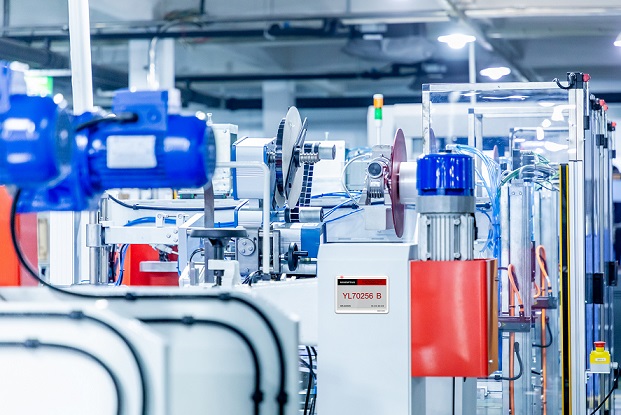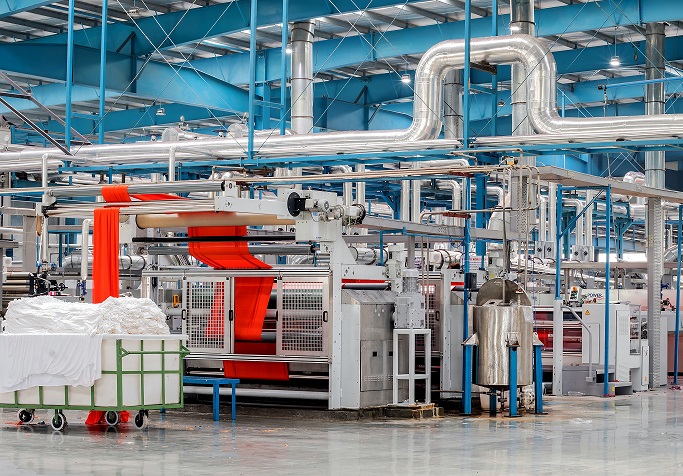The use of digital signage in factories has increased productivity, boosted workers' perceptions of their value and responsibility at work. Many companies with brick-and-mortar stores now use it to get an edge in the marketplace. Digital signage allows modifications to be promptly and swiftly loaded into the electronic shelf label via the access point. Having a digital signage system installed in a factory can significantly lessen the likelihood of worker injuries. Digital displays can help coordinate a swift and safe response to an emergency, whether keeping people safe, evacuating the building, or even eliminating the building entirely.
In today's factories, digital signage has become an indispensable tool. Phones, emails, two-way radios, and public address systems have limitations our technology helps to overcome. Increased safety consciousness, quicker responses to production difficulties, and higher productivity are just a few qualitative gains that can be made.

Digital signage in production process
Why Choose Digital Signages?
Is digital signage the answer you've been looking for to reach out to customers and boost revenue? One of the best ways to get customers to spend more time in your store is with your tiny form touch display. Building on the value of a physical place, the latest generation of interactive digital signage allows you to provide the digital experiences that today's consumers expect. It makes sense to include the digital realm in your area, as an increasing number of consumers are accustomed to obtaining information via displays of varying sizes.
It is now more crucial than ever for traditional stores to focus on customer service. In today's market, having cheap prices and a lot of stock is not enough.
Because of this problem, more and more companies are relying on technological aids. There may be a lot of alternatives, but nothing beats construction signage in terms of popularity.
In the same way that the usefulness of other technologies grows with time, industrial signage is becoming increasingly important. Many companies with brick-and-mortar stores now use it to get an edge in the marketplace.

Production industry
Digital Signage Replaces Paper in The Industry
Digital signage allows modifications to be promptly and swiftly loaded into the electronic shelf label via the access point, making the process transparent and automated for the personnel. As a result, workers will always access the most up-to-date information without filling out any extra paperwork because the labels are digital.
Some typical applications of digital signage in factories, as well as the financial benefits those facilities might expect to reap from investing in the technology, are as follows:
1. KPI Reporting
The use of digital signage to display key performance indicators on the factory floor has increased productivity, boosted workers' perceptions of their value and responsibility at work, and promoted a positive work environment characterized by healthy competition and a solid commitment to the achievement of team goals.
Such visuals can be included to think about real-time productivity figures and uptime and downtime information. Workers can view and understand them with minimal disruption to their activity.
2. Limiting Injuries and Mishaps
Having a digital signage system installed in a factory can significantly lessen the likelihood of worker injuries. Employees can be alerted to potential dangers, including gas leaks, harmful airborne particles, spills, and other issues that could cause harm to them on the job. Because digital signage makes it simple to send the same message multiple times, it is a powerful tool for reinforcing safety messages.
3. Urgent Messages
In manufacturing facilities, where worker safety is always a top priority, digital signage provides a vital function and daily communication to critical people. Staff members at the plant can be informed immediately of the nature of the situation, its location, and any necessary courses of action by viewing emergency alerts displayed on a digital construction work signs board. Compared to a simple whistle or siren that alerts workers to danger "somewhere," this is a vast improvement. Digital displays can help coordinate a swift and safe response to an emergency, whether keeping people safe, evacuating the building, or entirely.

Production industry
4. Incentivizing
Digital signage in manufacturing can benefit innovative managers looking for new ways to motivate their staff. It's easy to see how two lagging departments may drag down the entire organization. The current standings of the competing departments can be shown on a standings board, which can serve as the basis for a friendly competition. In turn, this will boost output and morale to new heights. Those who see the results of their hard work are more likely to keep up with the improved production.
5. Meetings and Training Regarding Safety
Managers, safety professionals, and human resources directors in the industrial industry praise the usefulness of digital signage for safety training and meetings.
The use of digital signage in factories is relatively unknown and rarely discussed. Digital signage, however, is an indispensable tool for any modern enterprise because it can show crucial production line alerts and plant metrics and reinforce safety information.
6. Electronic Shelf Labels
When it comes to digital signage, electronic shelf labels (ESLs) are among the most widely used tools now available. These electronic labels have mostly replaced traditional paper and plastic price tags, but they have many potential applications. More vivid and engaging visuals regarding a product can be displayed on more prominent electronic shelf labels, which retailers can order for their shelves so that customers can watch as they shop. Workers can also use digital displays to keep track of stock and other inventory.
This is because the server that the electronic shelf labels are linked to is accessible to multiple personnel at once. As the ESL assigns a marker to each product, the store's employees can quickly locate them using in-store digital maps. In addition, digital signage is simple to update. Employees are freed up to focus on customer service and other priorities when a new page is uploaded to the server and mirrored across several hundred ESLs in minutes.
For example:
WS075: Engineers spent a lot of time making changes to this V-shaped digital sign so it could be seen from the best angle. This classic style works well in a variety of settings.
Safe for your eyes and the environment, the e-ink display doesn't dim when shooting photos or flickers when recording video. It boasts a full-graphic collection, a viewing angle of approximately 180 degrees, and the appearance of paper.
Conclusion:
There are many opportunities to increase product awareness, improve customer service, and enrich the shopping experience when digital signage is implemented at a retail establishment. Signage can be introduced simply by playing an advertisement for the product, or it can be taken to the next level by installing interactive screens and self-service checkouts. Whatever route you take, you must discover an answer that works for your company.



